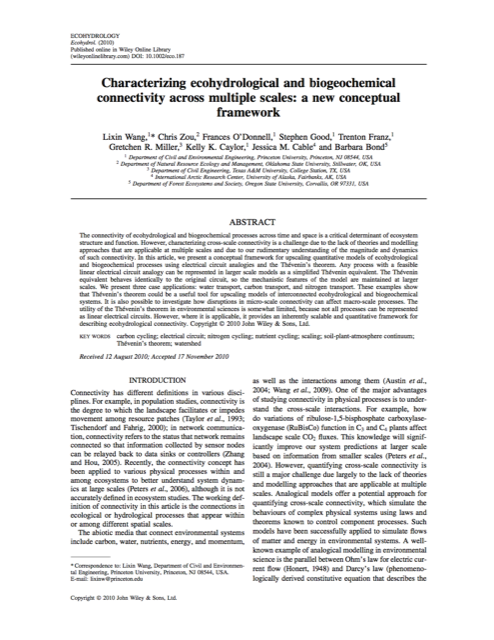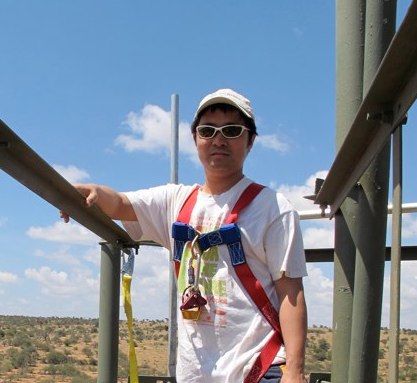Characterizing ecohydrological and biogeochemical connectivity across multiple scales: a new conceptual framework

*Wang, L., Zou, C., *O’Donnell, F., *Good, S.P., *Franz, T., Miller, G.R., Caylor, K.K., Cable, J.M., Bond, B. (2012) “Characterizing ecohydrological and biogeochemical connectivity across multiple scales: a new conceptual framework,” Ecohydrology, doi:10.1002/eco.1187.
The connectivity of ecohydrological and biogeochemical processes across time and space is a critical determinant of ecosystem structure and function. However, characterizing cross-scale connectivity is a challenge due to the lack of theories and modelling approaches that are applicable at multiple scales and due to our rudimentary understanding of the magnitude and dynamics of such connectivity. In this article, we present a conceptual framework for upscaling quantitative models of ecohydrological and biogeochemical processes using electrical circuit analogies and the Thévenin’s theorem. Any process with a feasible linear electrical circuit analogy can be represented in larger scale models as a simplified Thévenin equivalent. The Thévenin equivalent behaves identically to the original circuit, so the mechanistic features of the model are maintained at larger scales. We present three case applications: water transport, carbon transport, and nitrogen transport. These examples show that Thévenin’s theorem could be a useful tool for upscaling models of interconnected ecohydrological and biogeochemical systems. It is also possible to investigate how disruptions in micro-scale connectivity can affect macro-scale processes. The utility of the Thévenin’s theorem in environmental sciences is somewhat limited, because not all processes can be represented as linear electrical circuits. However, where it is applicable, it provides an inherently scalable and quantitative framework for describing ecohydrological connectivity.
